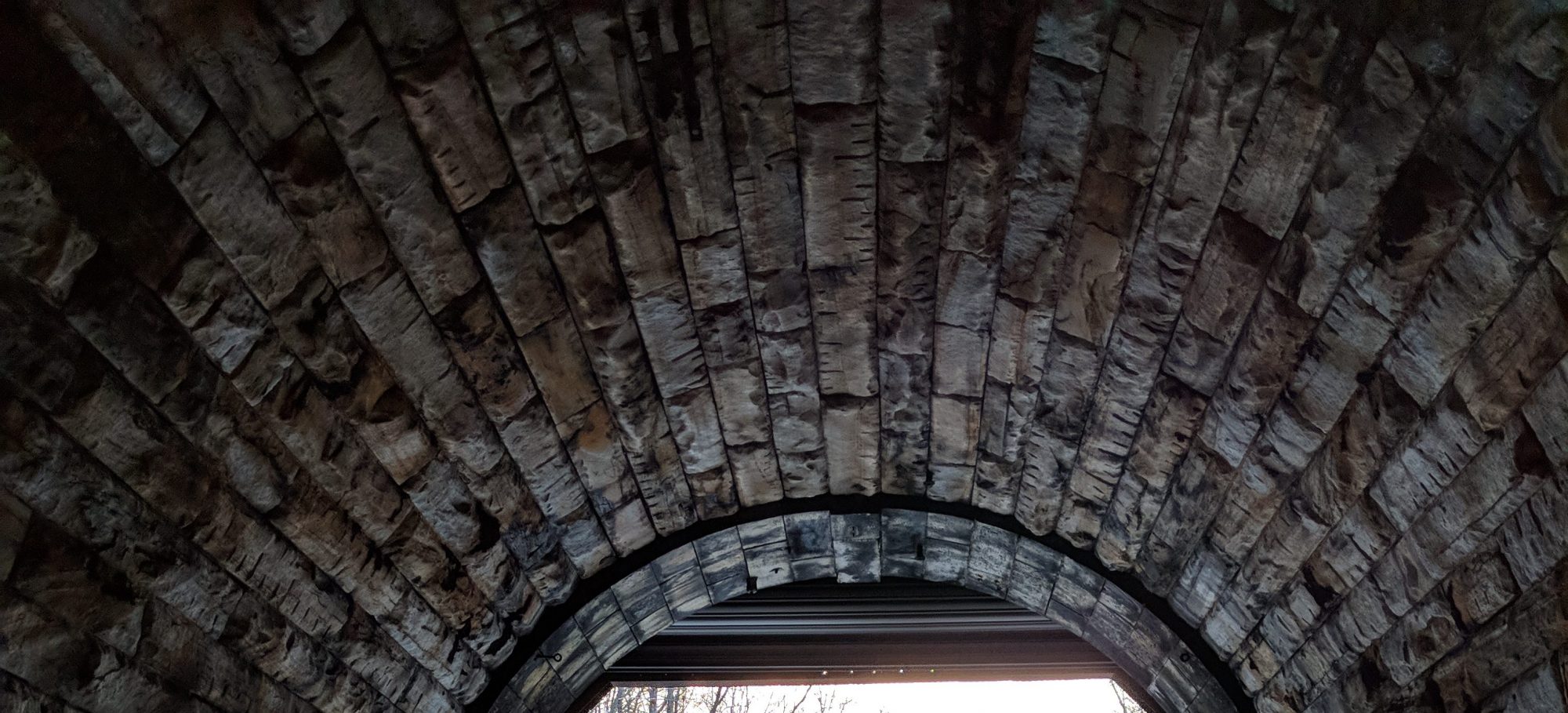Where is the East Portal?
The East Portal of the Hoosac Tunnel is located in Florida, Massachusetts, 4.5 miles away from its counterpart in North Adams, MA. This route is direct through the tunnel itself, however driving from the West to the East (or vice versa) is about 11 miles and takes twenty or so minutes.
If the first stop is the North Adams portal, one can drive from the West Portal to the East Portal via a road called, aptly, West Shaft Road. This road leads towards the hairpin turn and a breathtaking view of the valley. The hairpin turn takes sight-seers up to the summit, and upon the first left turn, visitors are greeted once more by a gorgeous view. This eventually leads to a massive wall of rock, and the road eventually parallels the Deerfield River.
The road will lead to something very different from the North Adams portal. The East portal is relatively closed off from the rest of the town of Florida, and yet feels much more active. Here, one can see many more individuals, especially workers as the site is still home to an active train line. Here, there are many no trespassing signs for safety reasons, so visitors are urged to be careful in approaching the tunnel. The train will be coming from inside the tunnel at this location, so visitors should not be entering the tunnel at this portal.
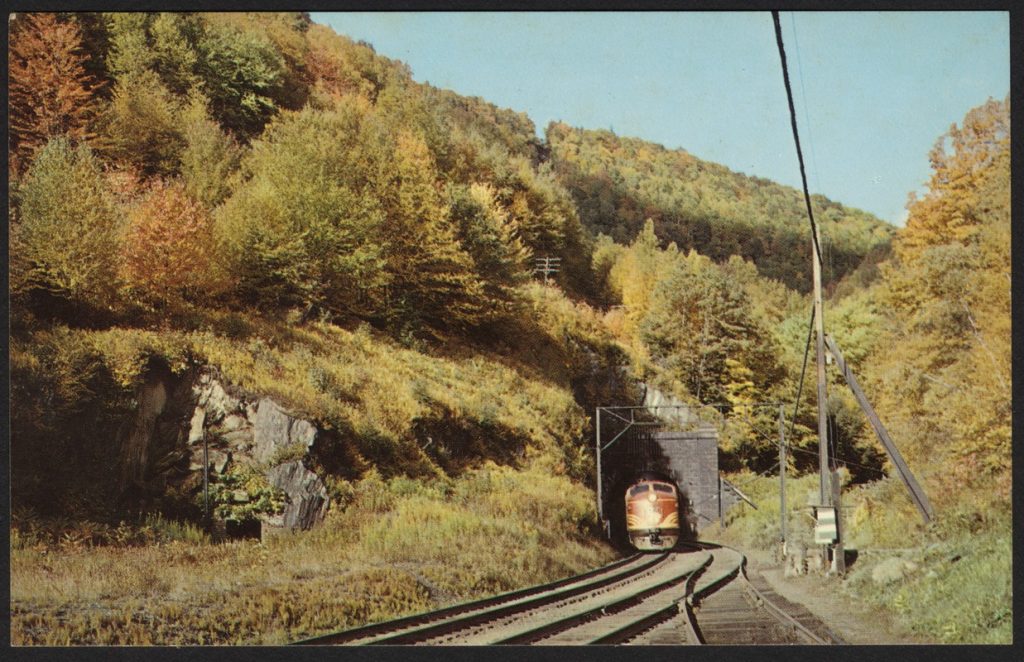
How was the East Portal Constructed?
The East Portal held fewer difficulties than the West Portal, as the rock was much firmer here. The most difficult part of the construction seemed to be getting the approval to actually create a tunnel. When this was acquired, however, the very next step was trying to figure out how exactly one would create a tunnel into the side of a mountain.
There were rumors of a “tunnel boring” machine around the 1840s, which could be used to mechanically dig into the side of the mountain. A man named Charles Wilson had patented a machine which could be used to create this tunnel, and by 1951, a contract was made to get the very machine to the site. If the machine could maintain 6 feet per day, the owner of the machine would be paid $100,000 for it, and more if the machine could maintain higher distance averages per day.
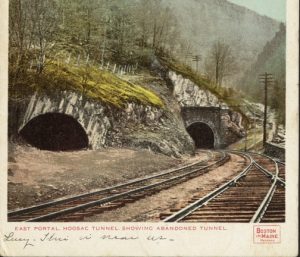
Charles Wilson was a mechanic from Springfield and had been friends with Joseph Richards, Luthor Munn, Lysander Richards and John S. Lyons , who owned a quarry in Quincy, Massachusetts. Joseph Richards obtained a patent for a machine to aid in his business, and Wilson had used similar ideas from it on his own machine. The massive stone cutting machine was hyped up against many newspaper articles and word of mouth as being, in so many words, the best stone cutting machine ever, as well as being what would solve all of the problems faced by the mountain.
While the tunnel boring machine was being assembled after a long journey over the mountain and across the state to actually be used at the Hoosac Tunnel location – owners charged sightseers a ticket to view it, at 25 cents per admission.
August 6, 1952 – The Borer Makes It’s Attempt
The machine faced many difficulties. The cutters were not strong enough or sharp enough to get very far into the mountain, making it a slow process. The test location for the machine was not quite flat enough, making the machine have more difficulties in carving a complete circle.
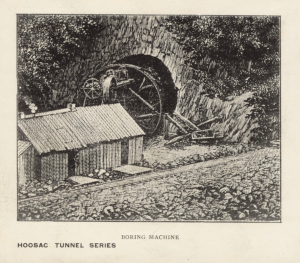
The builders were not concerned when the borer ended up failing, and spoke of heading to England to locate tougher steel. The confidence surrounding the borer and the tunnel itself helped in creating funding for the project, and enabling the tunnel to continue construction as well.
What has become known as the “False Start” is the first test site of this borer, and rather than the borer failing, it was a test location for the machine. The short test tunnel leads about 25 feet into the mountain, and today is half covered by dirt and snow (depending on the season).
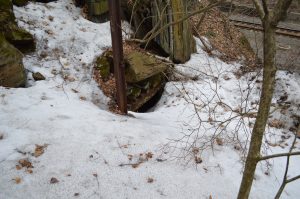
As stated previous, the East Portal was somewhat easier to build as opposed to the counterpart that is the West Portal. The East had much firmer stone, make it much simpler for the tunnel to hold itself up as builders began digging into the tunnel. Where the West needed timber supports, the East could simply hold its own weight.
While Alvah Crocker and compatriots were trying to gain support for the Hoosac Tunnel, construction continued despite having little funding. During one of the many meetings between the Western Railroad and those in support of the Hoosac Tunnel, those opposed to the tunnel decided they needed to actually see it to believe anything was being done. Of course, they were all very much surprised when the tunnel actually had progress being made, but also surprise in seeing the borer being used.
The aid bill was eventually passed in 1854, granting the builders of the Hoosac Tunnel aid in monetary form by the Commonwealth. There were still those, however, who believed that the tunnel would never be completed, and as it was published in the Boston Daily Advertiser, “it will be abandoned long before it is finished.” Luckily due to many of the builders stubbornness – the tunnel was very much completed, and is still used today.
Those who owned stock of the Troy and Greenfield Railroads were actually farmers. It can be said that the Hoosac Tunnel being built was a direct result of the support of the farmers in the area.
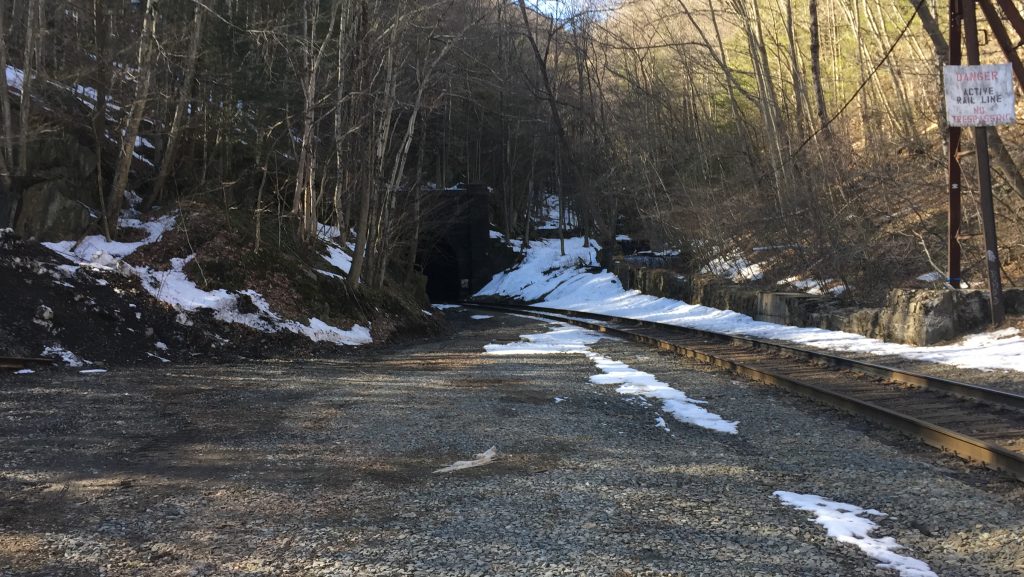
When you’re finished here, why not head over to the West Portal>>
